Overview
Successful wine eCommerce websites are defined by essential features that include:
- A user-friendly interface
- Efficient inventory management
- Secure payment processing
- Robust marketing strategies
These elements are not merely beneficial; they are crucial for enhancing customer experience, ensuring product availability, building trust, and effectively engaging target audiences. By focusing on these aspects, businesses can drive direct-to-consumer sales and foster customer loyalty. Emphasizing these features positions companies to meet the demands of a competitive market, ultimately leading to sustained growth and success.
Introduction
The wine eCommerce landscape is evolving rapidly, presenting both challenges and opportunities for vineyards aiming to enhance their direct-to-consumer (DTC) sales channels. As consumers increasingly seek seamless online shopping experiences, the integration of essential features into wine eCommerce websites becomes paramount. This article delves into the key components that not only elevate customer engagement but also drive sales growth. This prompts a critical question: how can wineries effectively adapt their online platforms to meet the demands of a competitive market while fostering loyalty among their clientele?
Enocap: Strategies for Building Robust DTC Sales Channels
Enocap emphasizes the critical importance of establishing a robust DTC sales channel, which is fundamentally reliant on a user-friendly website, strategic marketing initiatives, and personalized customer engagement. By unlocking direct-to-purchaser revenue, Enocap empowers vineyards to craft compelling brand narratives that resonate with buyers, effectively converting occasional shoppers into loyal club members. This transformation is achieved through and exclusive member perks. Furthermore, leveraging data analytics is essential for understanding consumer behavior and preferences, enabling vineyards to tailor their product offerings and marketing strategies effectively. For instance, vineyards that utilize data-informed insights can refine their promotional tactics, leading to enhanced client retention and increased sales.
Integrating wine ecommerce websites that prioritize seamless navigation and efficient checkout processes is vital for elevating the customer experience. As the DTC landscape evolves in 2025, vineyards must focus on developing impactful sales strategies that resonate with emerging market segments. This includes embracing premiumization trends, as illustrated by the average bottle price rising to $52.68, indicative of a growing willingness among consumers to invest in higher-quality wines. Notably, very small producers have witnessed a 15% increase in average bottle price, reaching $79.34, despite a 12% decline in shipment volume. This trend underscores how smaller producers are adapting to shifting market dynamics.
Moreover, the overall U.S. DTC wine shipment volume has decreased by 12% in the first half of 2025, highlighting the competitive nature of the market. However, the average order value for DTC shipments has risen from $463 to $521, representing a 13% increase. This suggests potential revenue growth through effective DTC strategies. By embracing these transformative approaches, including strategic capital planning, businesses can not only enhance their DTC revenue but also foster lasting connections with their clients, thereby ensuring sustainable growth in an increasingly competitive market.
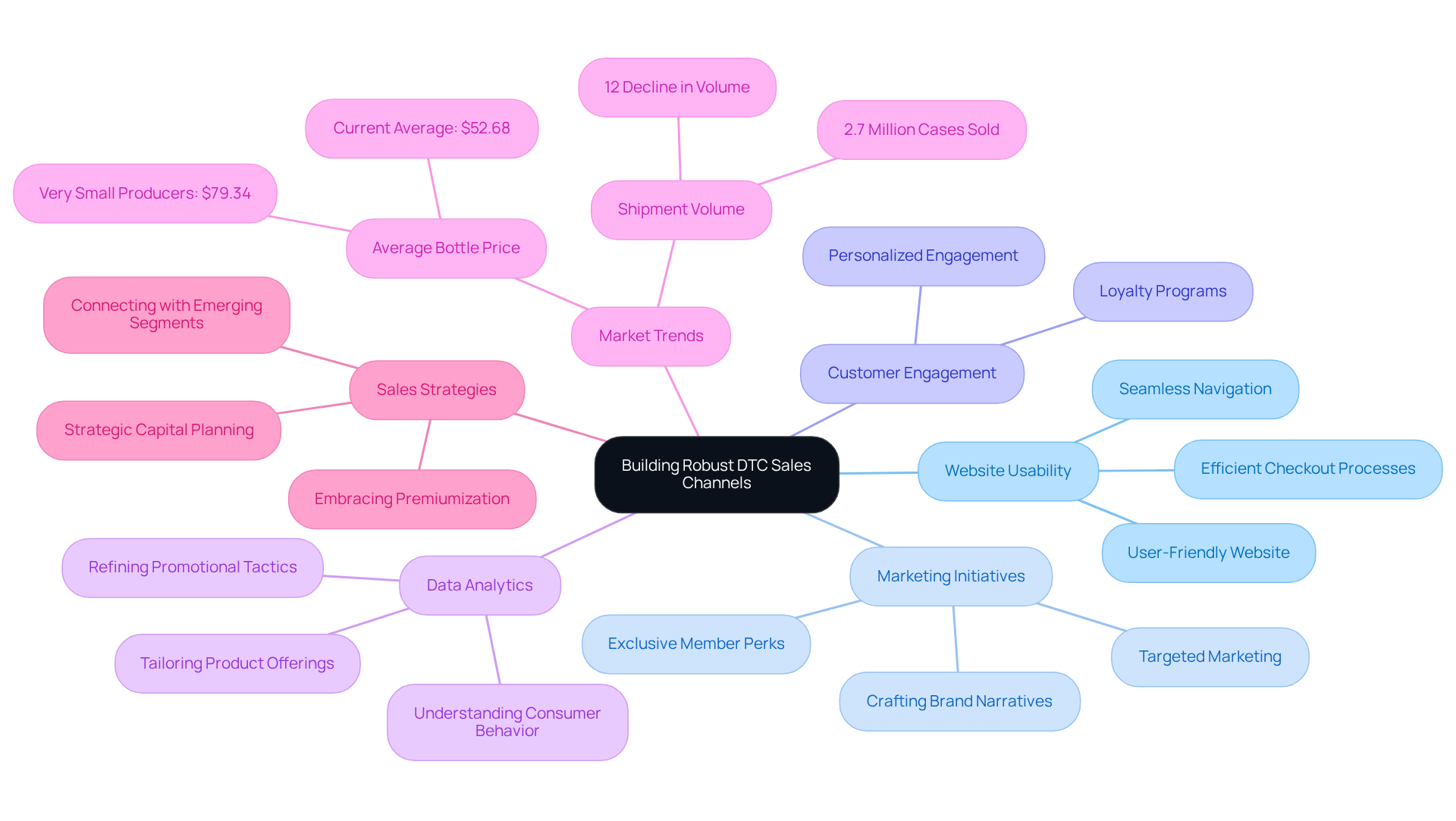
User-Friendly Interface: Enhancing Customer Experience
A user-friendly interface is essential for creating a seamless shopping experience on wine ecommerce websites, prioritizing simplicity and intuitive navigation. Key features of wine ecommerce websites include:
- Well-organized product categories
- A prominent search bar
- A streamlined checkout process that minimizes friction
Responsive design is crucial for wine ecommerce websites, as it ensures accessibility across various devices, which is increasingly important since mobile traffic accounted for over 60% of website visits in 2022. Such adaptability enhances the shopping experience for all users on wine ecommerce websites, allowing them to browse and purchase with ease.
Additionally, wine ecommerce websites can greatly enhance client interaction and generate consistent DTC revenue by offering comprehensive product details and high-quality visuals. For instance, the website of Château d’Yquem exemplifies luxury and sophistication through its elegant design and stunning visuals, inviting deeper exploration of their offerings. Similarly, White Walnut Estate’s site captures the serene beauty of Oregon’s Willamette Valley, effectively showcasing their wines while enhancing user experience through intuitive navigation.
By concentrating on these design elements, vineyards can establish an engaging online presence through wine ecommerce websites that not only boosts sales but also nurtures enduring relationships with customers, turning occasional buyers into devoted club members. Regularly evaluating their website's design and user experience based on these insights can motivate vineyards to implement necessary enhancements. To further enhance their DTC channels, producers should consider conducting to identify pain points in the shopping experience and make data-driven adjustments.
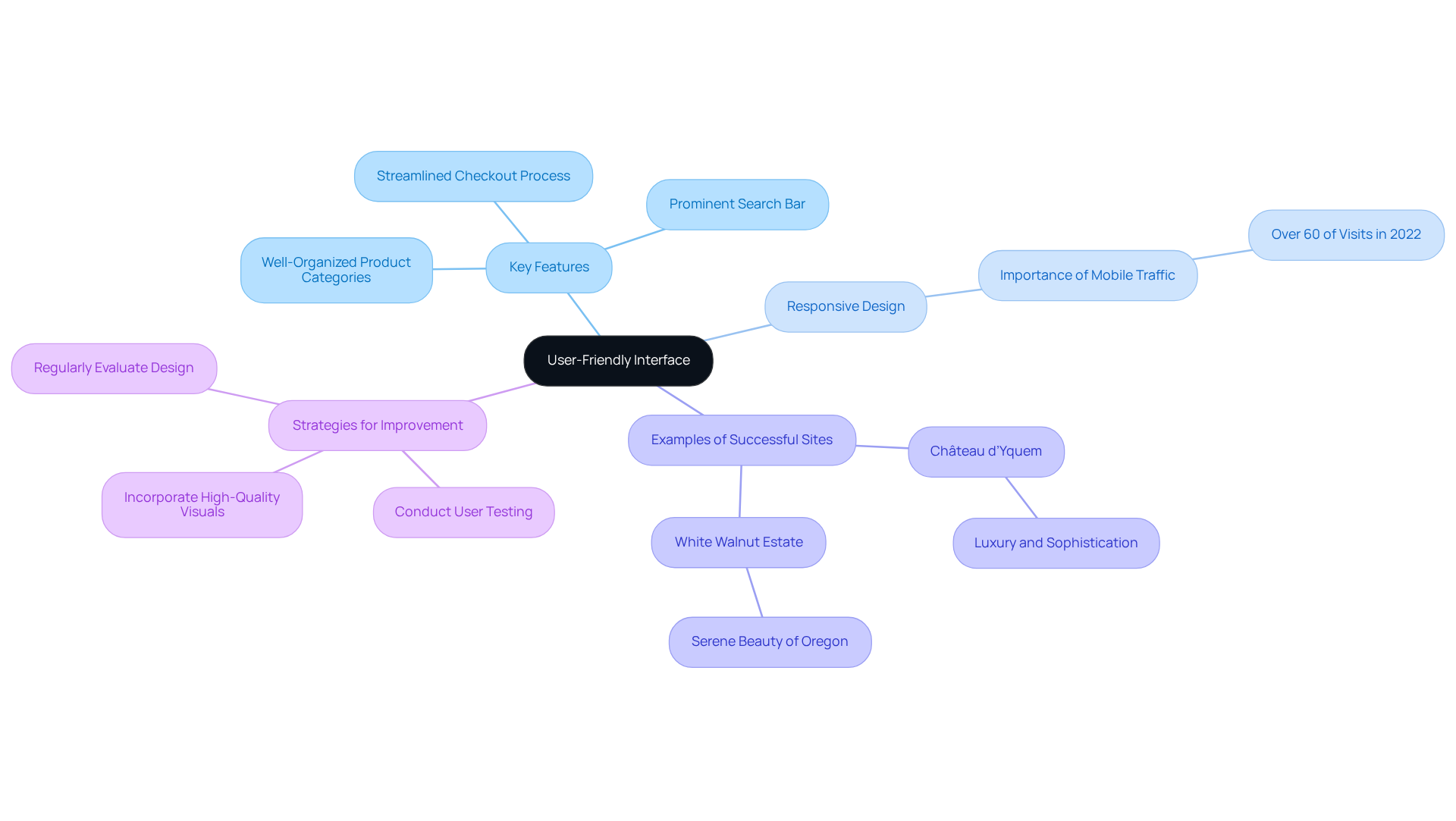
Inventory and Stock Management: Ensuring Product Availability
An efficient inventory management system is essential for vineyards to track stock levels in real-time, forecast demand accurately, and manage reorders seamlessly. By utilizing software solutions that integrate with eCommerce platforms, vineyards can access precise data on product availability, ensuring that popular wines are consistently in stock. This proactive strategy not only boosts consumer trust but also encourages . Buyers are more inclined to return to an establishment that consistently fulfills their needs.
For instance, vineyards employing real-time inventory monitoring have reported substantial enhancements in client satisfaction and loyalty. As highlighted in industry discussions, effective stock management is crucial for maintaining a competitive edge in wine ecommerce websites, where timely availability can make or break a sale. By leveraging advanced inventory management tools, vineyards can streamline operations, reduce costly errors, and ultimately drive sustainable growth in their direct-to-consumer sales.
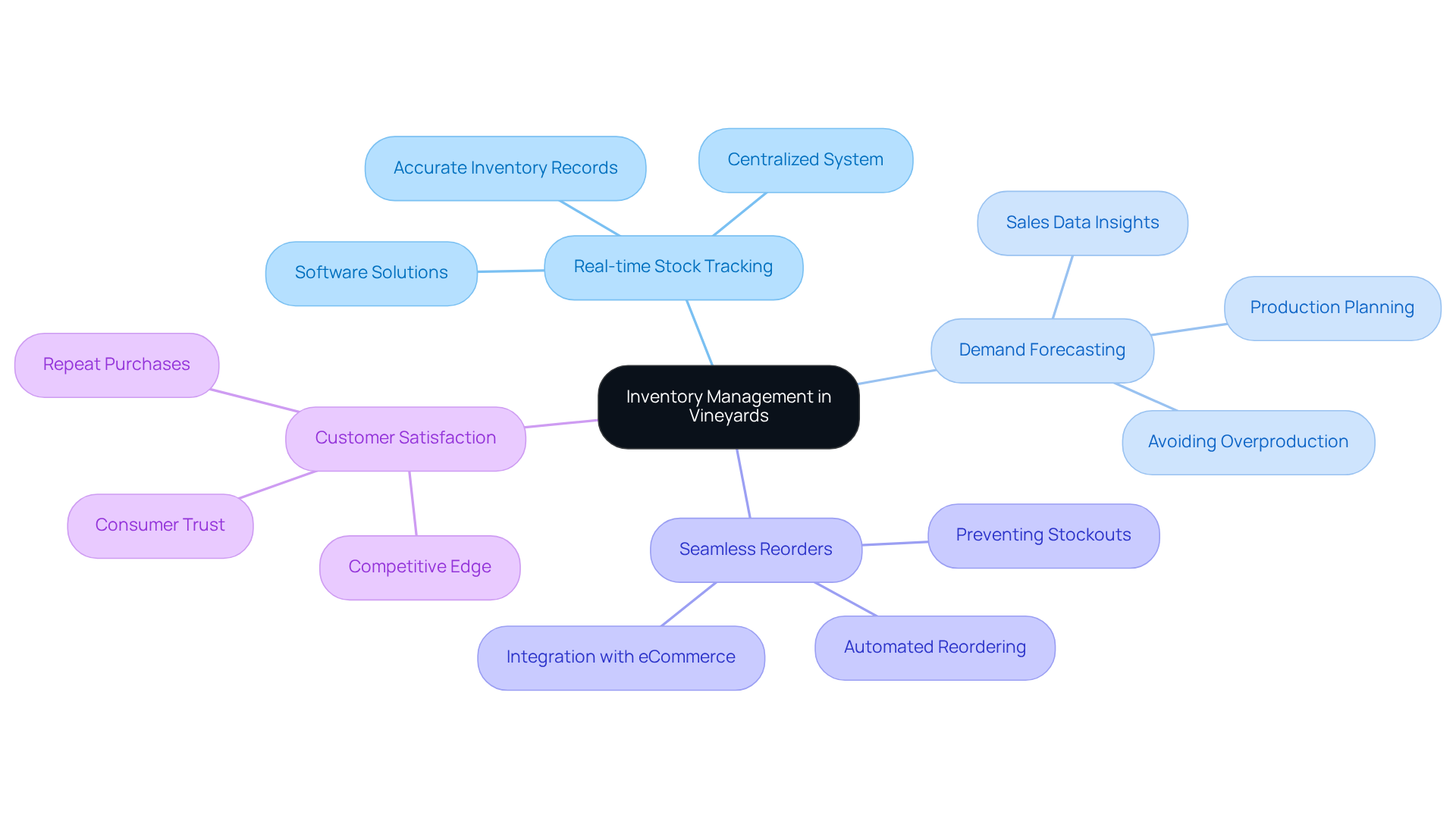
Payment Processing and Security: Building Customer Trust
To cultivate client trust, wineries must implement secure payment processing systems that comply with PCI DSS standards, ensuring the protection of sensitive client information. As consumer preferences evolve, offering a variety of payment options—such as credit cards, digital wallets, and buy-now-pay-later services—becomes essential to meet diverse needs. In fact, over 67% of clients abandon their shopping carts due to security concerns, underscoring the importance of a seamless and secure checkout experience. Notably, eCommerce is the most vulnerable industry for cyber-attacks, accounting for 32.4% of all attacks, which highlights the urgency of implementing robust security measures.
Furthermore, prominently displaying security badges and clear privacy policies on the checkout page can significantly enhance buyer confidence in the safety of their transactions. Wineries like WineDirect exemplify best practices by employing , including multi-factor authentication and 3D Secure, which not only protect against payment fraud but also reduce chargebacks, ultimately benefiting their financial bottom line. Additionally, vineyard establishments should be aware that non-compliance with PCI DSS can result in penalties ranging from $5,000 to $100,000 per month, emphasizing the financial implications of neglecting security measures.
As the eCommerce landscape grows more competitive, emphasizing strong online security features is not merely a regulatory necessity but a strategic essential for producers aiming to establish enduring connections with their clients. Furthermore, with the enforcement of PCI DSS requirements 6.4.3 and 11.6.1 starting March 31, 2025, it is crucial for wine producers to prepare for compliance to avoid potential repercussions.
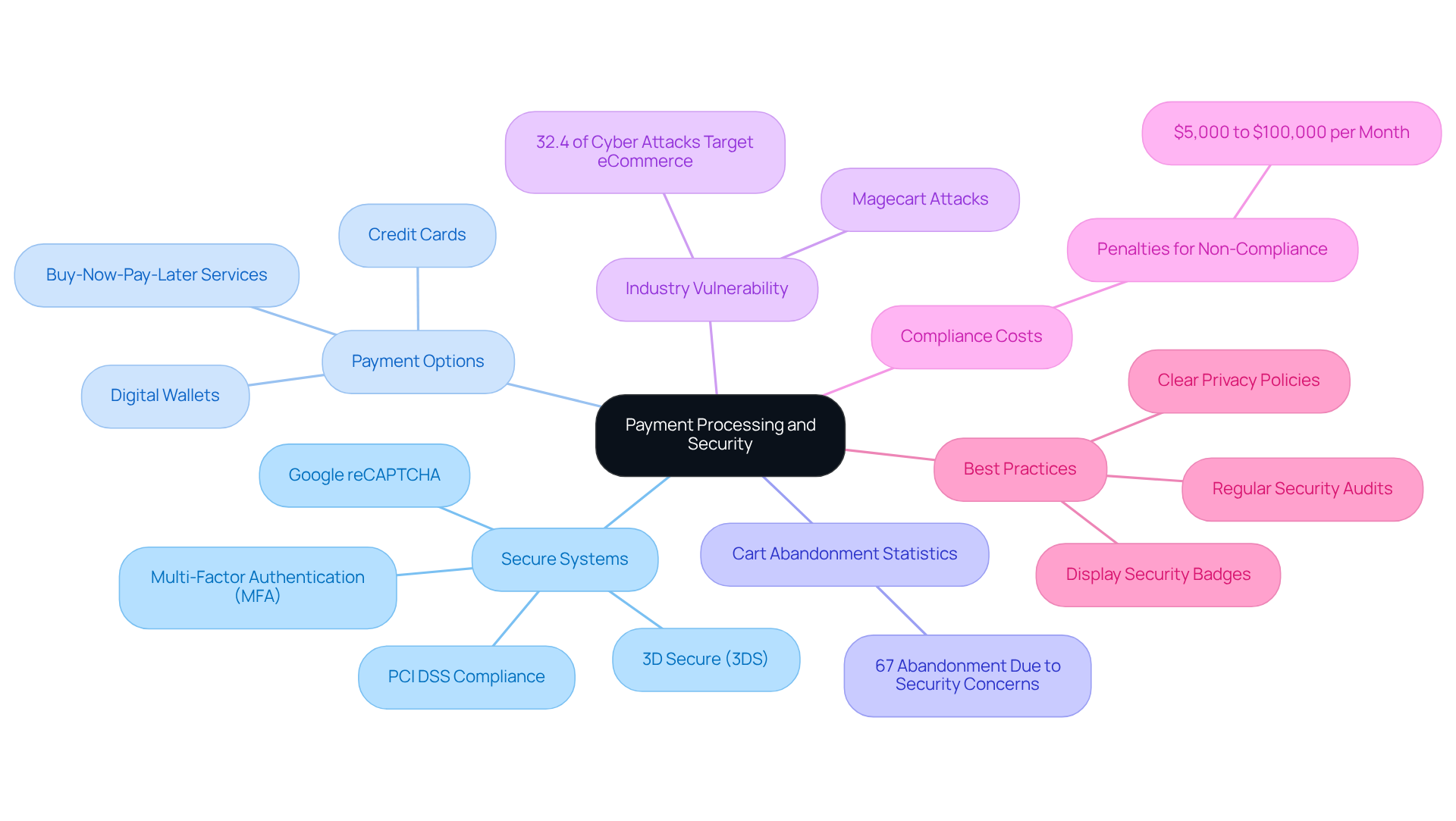
Compliance Management: Navigating Legal Requirements
Wineries must adeptly navigate a complex landscape of when selling alcohol online, encompassing age verification, shipping regulations, and tax obligations. Age verification is particularly critical; it ensures that individuals meet the legal drinking age, thereby mitigating risks associated with non-compliance. Industry insights reveal that producers implementing compliance management software experience a 30% reduction in compliance-related errors, significantly enhancing operational efficiency. This technology streamlines processes, guaranteeing that all transactions comply with local and federal laws, which is essential for preserving operational integrity.
Moreover, regular training for staff on compliance issues is paramount. Such training mitigates risks and ensures that employees are well-informed about the latest regulations. For instance, establishments utilizing compliance management software report a notable decrease in compliance-related errors, allowing them to focus more on sales and customer engagement.
Furthermore, successful vineyards often share best practices for navigating these legal requirements. By meticulously documenting processes and maintaining organized records, they can efficiently manage their compliance obligations, ultimately fostering a trustworthy relationship with consumers. As Laurie Millotte aptly states, "To sell alcohol online, it is crucial to strictly adhere to local, state, and federal regulations." As the eCommerce landscape evolves, staying proactive about compliance will be vital for vineyards aiming to thrive on wine ecommerce websites in the digital marketplace. Non-compliance can lead to substantial penalties, underscoring the necessity for wineries to prioritize their compliance strategies.
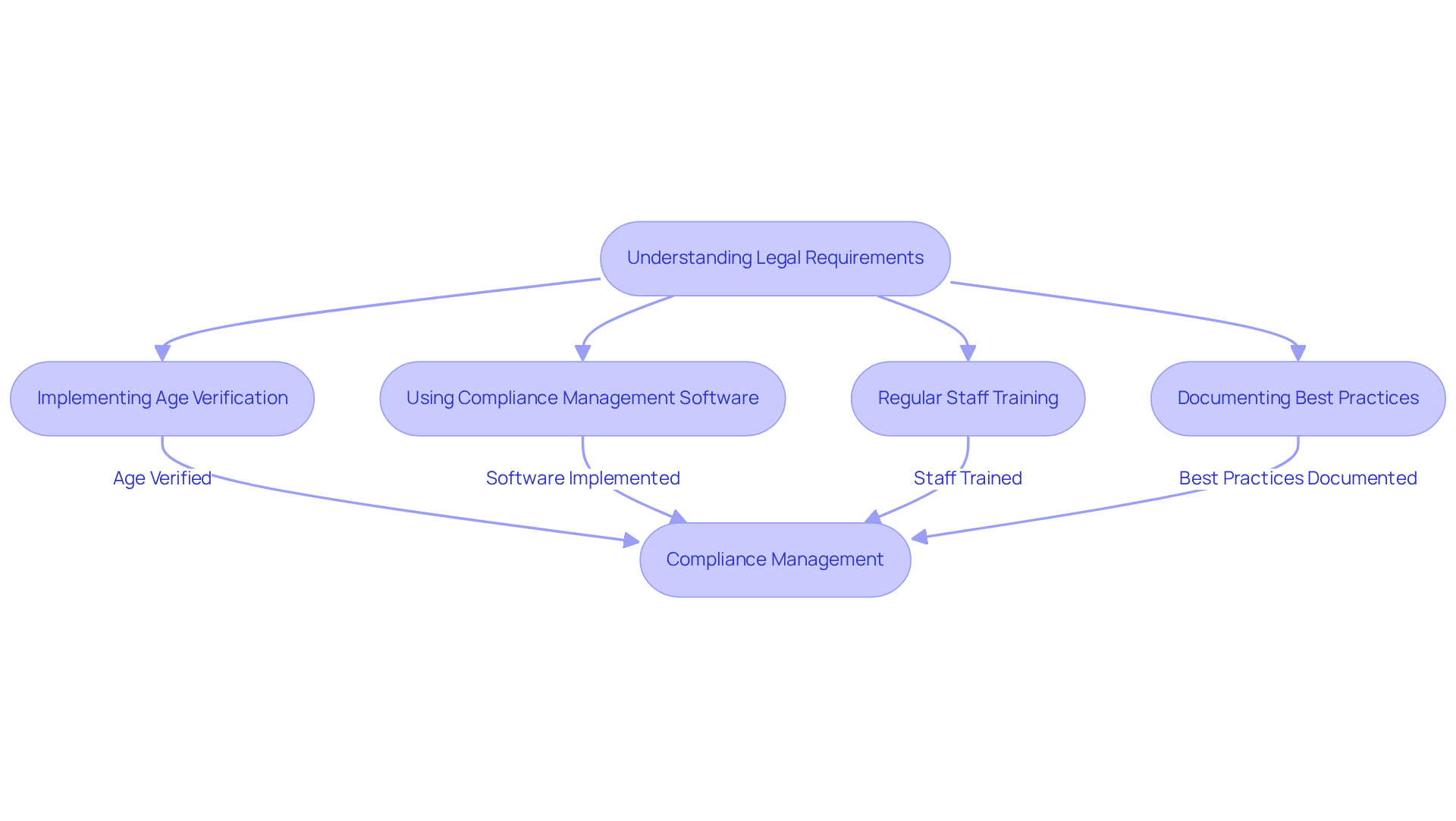
Shipping Logistics: Ensuring Timely Deliveries
Wineries must strategically collaborate with logistics providers specializing in alcohol shipping to ensure timely and secure deliveries—an essential element of their and overall capital planning. The significance of reliable logistics cannot be overstated; industry experts emphasize that effective logistics management is vital for maintaining client satisfaction and loyalty, particularly in converting casual buyers into dedicated club members.
By offering a range of shipping options, including expedited and standard delivery, wineries can cater to diverse client preferences while enhancing their brand narrative. Moreover, providing real-time tracking information and maintaining transparent communication about delivery timelines significantly enriches the client experience.
Optimal strategies involve forging strong partnerships with logistics companies that understand the unique challenges of alcohol transportation, ensuring compliance with regulations, and employing proactive communication methods to manage client expectations.
For instance, establishments that have successfully integrated logistics partnerships report improved delivery times and heightened customer satisfaction, underscoring the importance of investing in reliable shipping solutions as part of a comprehensive strategy for sustainable growth.
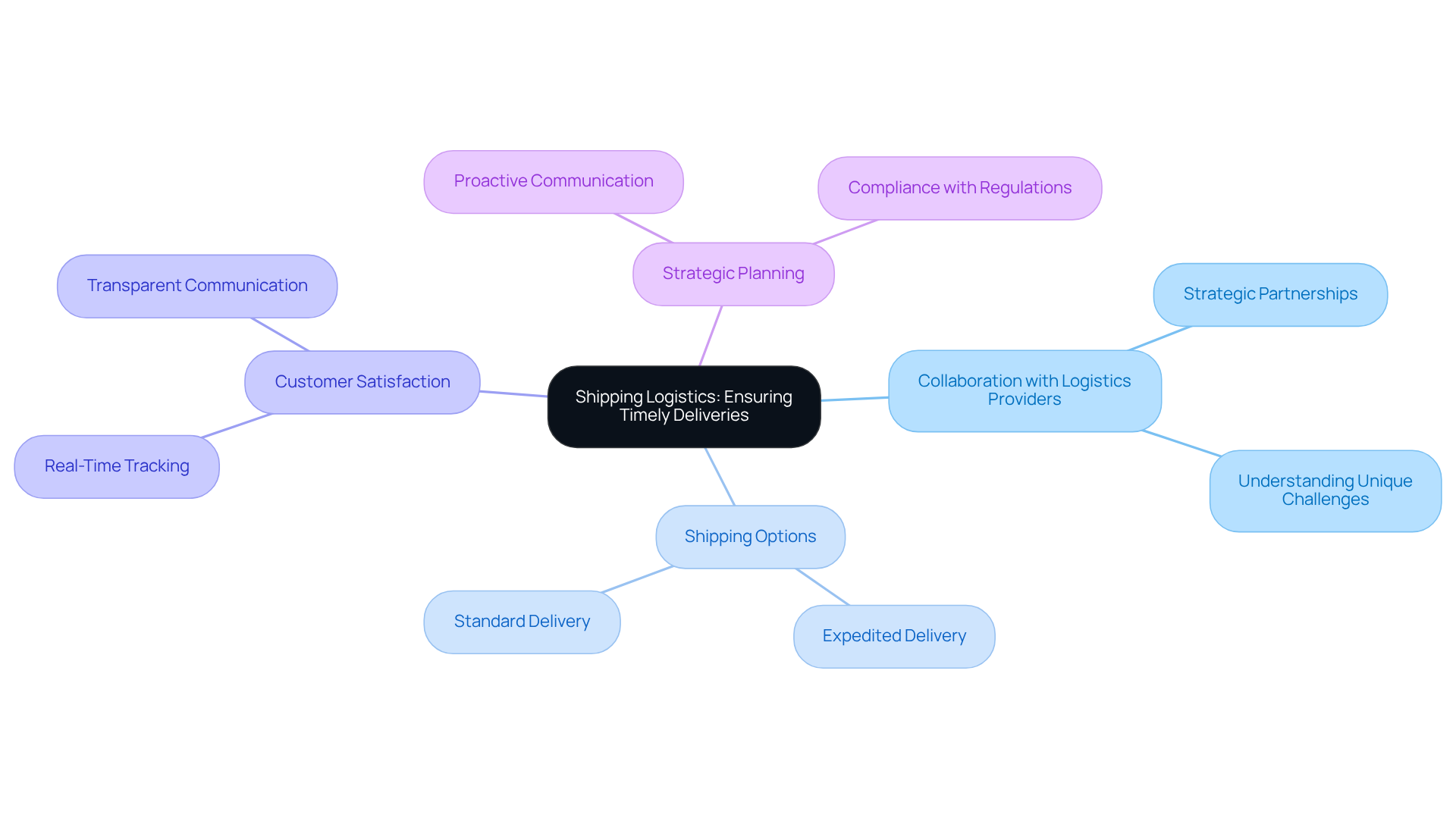
Diverse Marketing Tools: Engaging Target Audiences
Wineries must embrace a diverse array of , including social media advertising, email marketing, and content marketing, to effectively engage their target audiences. By crafting compelling narratives that highlight the establishment's heritage and product offerings, wineries can significantly resonate with buyers, fostering a deeper connection.
For instance, establishments like Château Gassier have successfully shifted to brand-focused storytelling, emphasizing family heritage and sustainability, which has proven effective in cultivating customer loyalty. Notably, 66% of U.S. buyers opt for sustainable wines to support small farmers, underscoring the importance of aligning marketing messages with public values.
Moreover, leveraging analytics tools to evaluate campaign performance allows vineyards to continuously refine their marketing strategies. This data-driven approach not only enhances engagement but also equips vineyards to adapt to evolving consumer preferences, ensuring competitiveness in a dynamic market.
To further drive growth, establishments should consider strategic capital planning to secure appropriate funding for expansion and innovation. As the wine industry increasingly embraces digital channels, wine ecommerce websites must integrate innovative formats and interactive content to attract younger demographics, who tend to gravitate towards brands that reflect their values and lifestyle.
By establishing sustainable direct-to-consumer channels and implementing targeted strategies, such as personalized offers and exclusive memberships through wine ecommerce websites, producers can effectively convert casual buyers into loyal club members. Innovative digital narratives and lifestyle branding are crucial, as they surpass traditional advertisements in capturing the interest of younger audiences, ensuring that businesses remain competitive in an ever-evolving market.
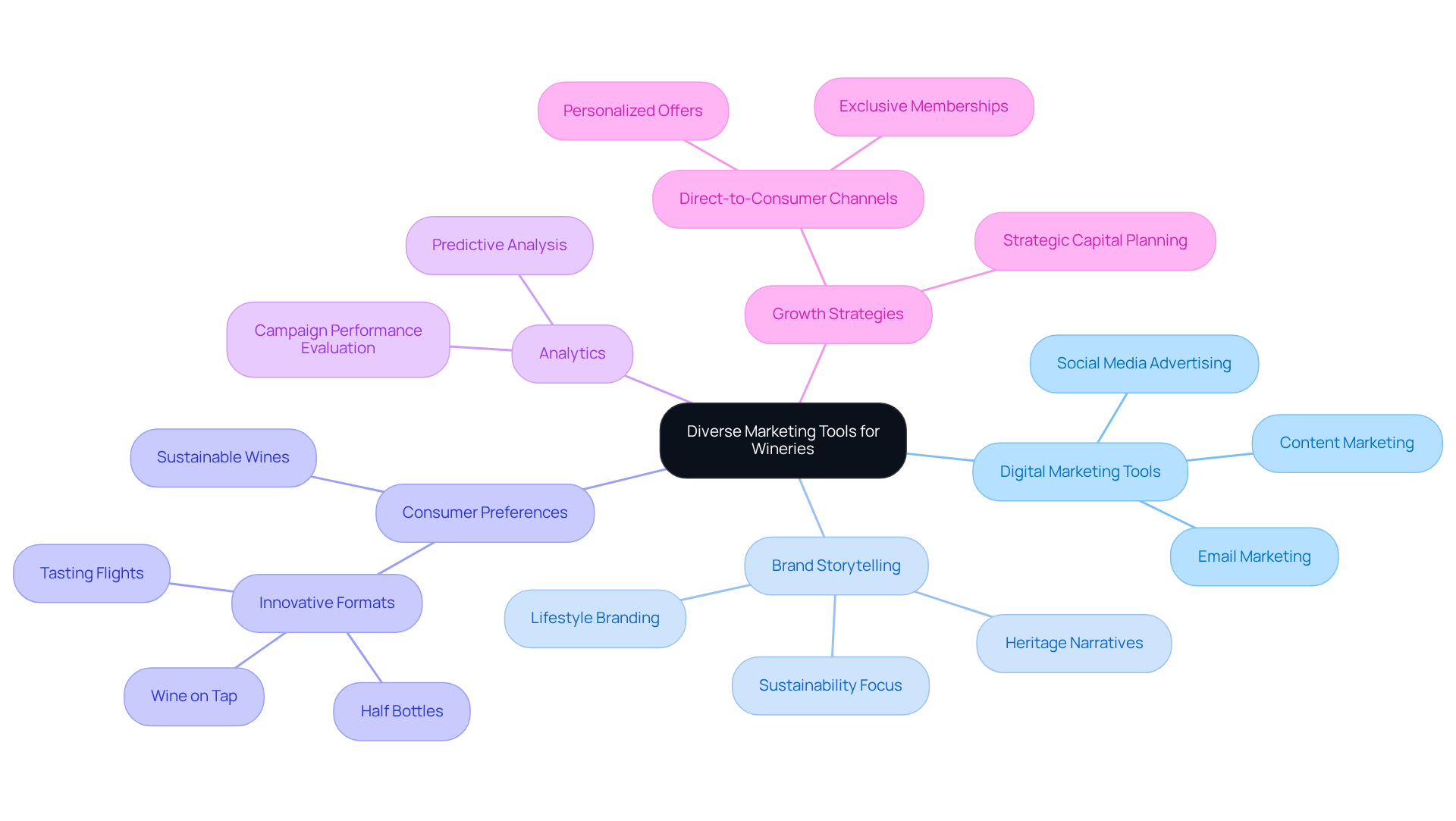
Age Verification Tools: Ensuring Responsible Selling
To uphold responsible selling practices, producers must implement comprehensive within their eCommerce platforms. This involves requiring customers to input their date of birth during the checkout process and leveraging third-party verification services to ensure compliance with legal age restrictions.
Clear communication regarding age limitations on the website is essential, reinforcing the establishment's commitment to responsible selling. Studies indicate a 45% success rate for underage attempts to purchase alcohol online from retailers using age gates, highlighting the effectiveness of automated age checks in significantly reducing the risk of underage purchases.
As the global online alcohol market is projected to reach $40 billion by 2027, it is imperative for producers to adopt these practices to safeguard themselves from potential legal consequences and build trust with their customers. Implementing a multi-step age verification process can provide a more reliable method of confirming a purchaser's age, ensuring that only those of legal drinking age can access their products.
As Kerwell Liao, Product Marketing Manager, states, "A robust, multi-step age verification process can help licensees avoid legal consequences and/or license revocation for inadvertently supplying a minor with alcohol.
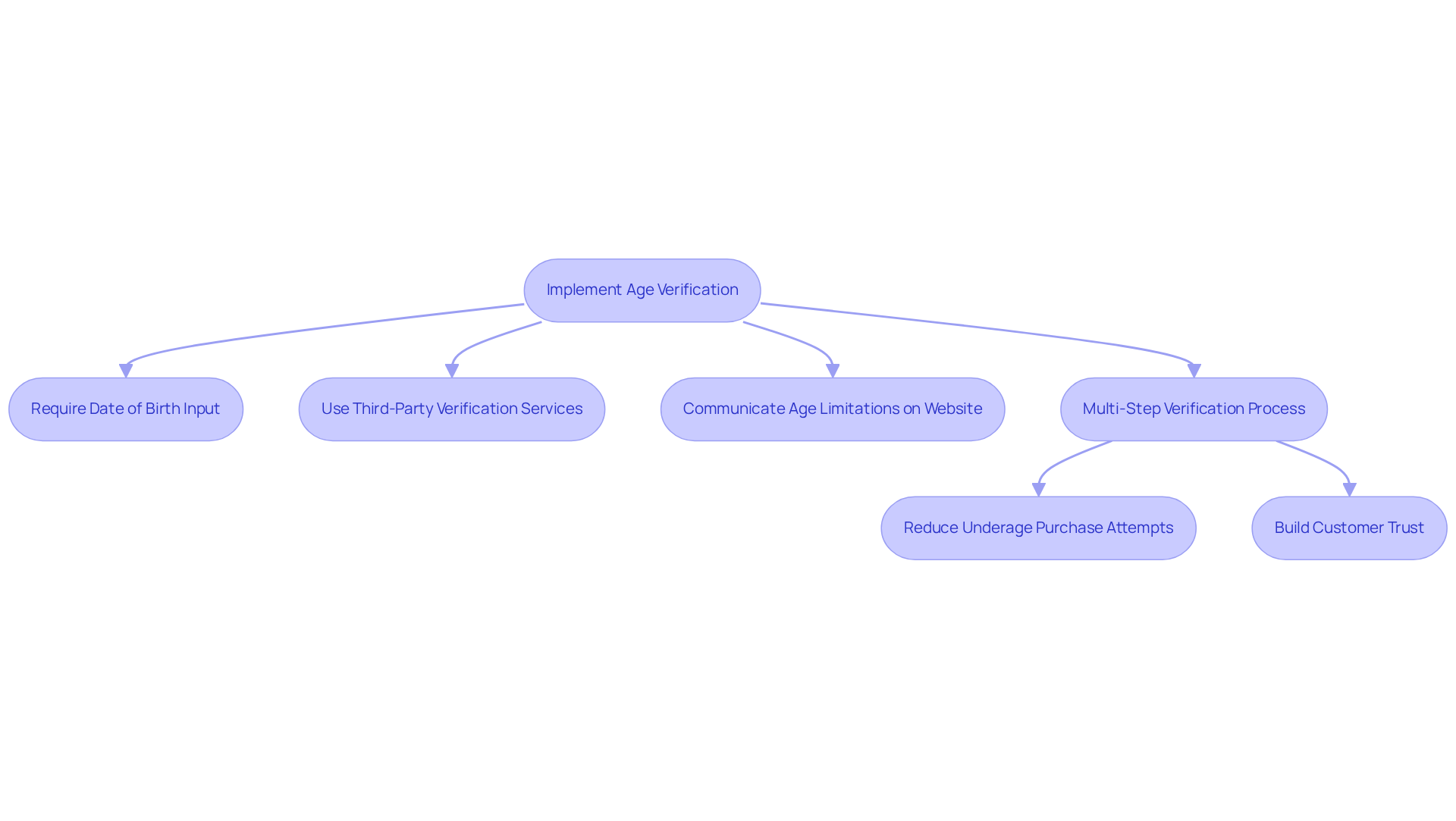
Wine Club Subscriptions: Fostering Customer Loyalty
Establishing a wine club serves not only to cultivate a sense of community among patrons but also to offer exclusive benefits, including access to limited releases and special events. To foster loyalty among members, wineries must prioritize the creation of personalized experiences. This entails curating wine selections tailored to individual preferences and providing member-only discounts that enhance perceived value. Regular communication via newsletters and social media is essential for sustaining interest and engagement.
Proven strategies for generating predictable direct-to-consumer (DTC) revenue can be leveraged, as demonstrated by Edio Vineyards, which has successfully introduced a flexible pay-as-you-go membership model. This innovative approach empowers customers to utilize accumulated funds for various products, resulting in significantly lower cancellation rates and improved retention. As Christine Noonan, co-owner of Edio Vineyards, remarked, "The cancellation rate is significantly lower than what our traditional club was, and we are seeing a better retention rate."
Furthermore, Wayfarer Vineyard's hybrid membership model, which allows for customization, has resonated well with younger audiences, underscoring the effectiveness of personalized offerings. With 63.8% of consumers willing to invest $30 or less in a monthly wine subscription, producers should explore to attract this demographic. By focusing on these transformative DTC strategies and enhancing brand storytelling, producers can forge enduring relationships with their members, thereby ensuring long-term loyalty and satisfaction.
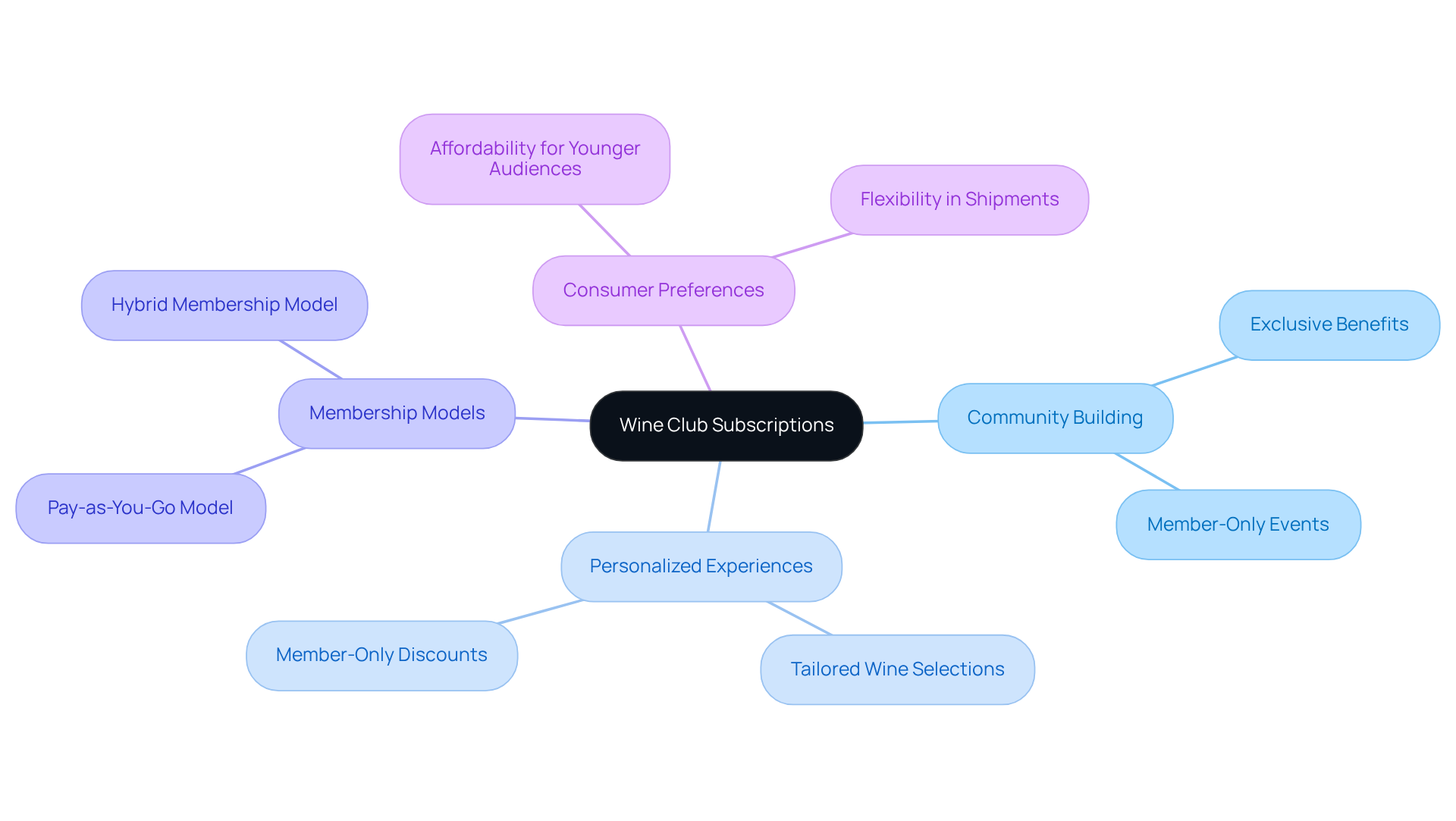
Personalization Features: Tailoring Customer Experiences
Wineries can significantly enhance their online presence through the strategic implementation of on their websites. By leveraging client data—such as previous purchases and browsing habits—personalized product suggestions can lead to increased sales and heightened client satisfaction. Notably, platforms like DRINKS Recommend have demonstrated that personalized recommendations can nearly double revenue for online wine merchants, underscoring the effectiveness of this approach.
Moreover, crafting customized marketing campaigns that resonate with individual preferences can cultivate deeper engagement. Vineyards have the opportunity to provide tailored experiences, including custom tasting notes or unique offers, which not only elevate client satisfaction but also strengthen the emotional connection between the establishment and its visitors. As industry specialists aptly observe, 'Data is the new terroir,' emphasizing the critical role of data-driven approaches in nurturing client loyalty.
Successful examples abound; for instance, Echolands Winery has reported that 60% of its recent engagement comes from individuals aged 25 to 44, a demographic that significantly drives sales conversions. By harnessing consumer insights, vineyards can formulate focused marketing strategies that effectively connect with this audience, ultimately enhancing retention and loyalty. Furthermore, executing value-added strategies, such as Round Pond Estate's 'Shipping Included' offer, can further enrich client experiences.
To forge sustainable pathways that convert casual purchasers into dedicated club members, wine producers must also consider strategic capital planning to bolster their direct-to-consumer (DTC) initiatives. Personalized experiences are not merely advantageous; they are essential for vineyards striving to thrive in a competitive market. To effectively implement these personalization strategies, vineyards should invest in robust customer relationship management (CRM) tools that facilitate data gathering and analysis. A practical recommendation for wineries is to routinely analyze customer data to refine their personalization efforts, ensuring they align with evolving consumer preferences.
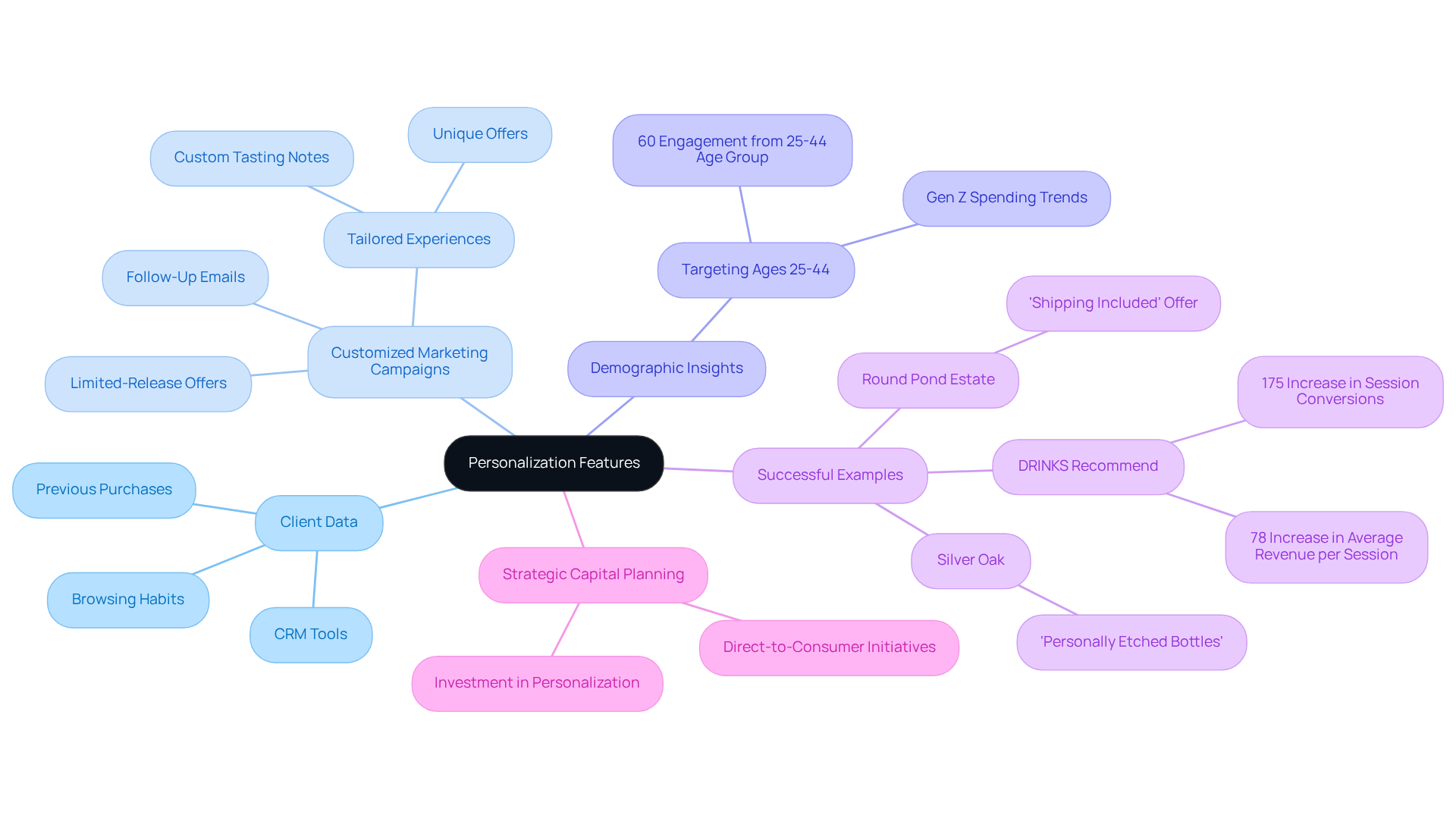
Conclusion
Establishing a successful wine eCommerce website is paramount, hinging on essential features that enhance user experience, streamline operations, and foster customer loyalty. By focusing on direct-to-consumer sales channels, wineries can effectively engage with their audience and build lasting relationships. The integration of user-friendly interfaces, secure payment processing, efficient inventory management, and personalized marketing strategies is critical for creating a compelling online presence that resonates with consumers.
Key insights from the article underscore the necessity of:
- A seamless shopping experience
- Robust compliance management
- Effective shipping logistics
These elements not only ensure customer satisfaction but also contribute significantly to increased sales and brand loyalty. As the wine industry continues to evolve, embracing diverse marketing tools and innovative personalization features will be essential for attracting and retaining a dedicated customer base.
Ultimately, the journey towards a thriving wine eCommerce platform demands a strategic approach that prioritizes the customer experience while adapting to market trends. Wineries must invest in technology and best practices that align with consumer expectations, fostering community through initiatives like wine club subscriptions. By doing so, they can enhance their direct-to-consumer sales and secure a sustainable future in an increasingly competitive landscape.
Frequently Asked Questions
What is the primary focus of Enocap regarding DTC sales channels?
Enocap emphasizes the importance of establishing a robust direct-to-consumer (DTC) sales channel, which relies on a user-friendly website, strategic marketing initiatives, and personalized customer engagement.
How does Enocap help vineyards with their sales strategies?
Enocap empowers vineyards to create compelling brand narratives that resonate with buyers, converting occasional shoppers into loyal club members through targeted marketing initiatives and exclusive member perks.
Why is data analytics important for vineyards?
Data analytics helps vineyards understand consumer behavior and preferences, allowing them to tailor their product offerings and marketing strategies effectively, leading to enhanced client retention and increased sales.
What are key features of user-friendly wine ecommerce websites?
Key features include well-organized product categories, a prominent search bar, and a streamlined checkout process that minimizes friction.
Why is responsive design crucial for wine ecommerce websites?
Responsive design ensures accessibility across various devices, which is important as mobile traffic accounted for over 60% of website visits in 2022, enhancing the shopping experience for all users.
How can vineyards enhance client interaction on their ecommerce websites?
By offering comprehensive product details and high-quality visuals, vineyards can improve client interaction and generate consistent DTC revenue.
What role does inventory management play in DTC sales for vineyards?
Efficient inventory management is essential for tracking stock levels in real-time, forecasting demand accurately, and managing reorders, which boosts consumer trust and encourages repeat purchases.
What benefits do vineyards experience from employing real-time inventory monitoring?
Vineyards that utilize real-time inventory monitoring report improvements in client satisfaction and loyalty, as timely availability of products is crucial for maintaining a competitive edge.
How can vineyards ensure their DTC sales strategies remain effective?
Vineyards can ensure effectiveness by regularly evaluating their website design and user experience, conducting user testing, and making data-driven adjustments to enhance the shopping experience.




